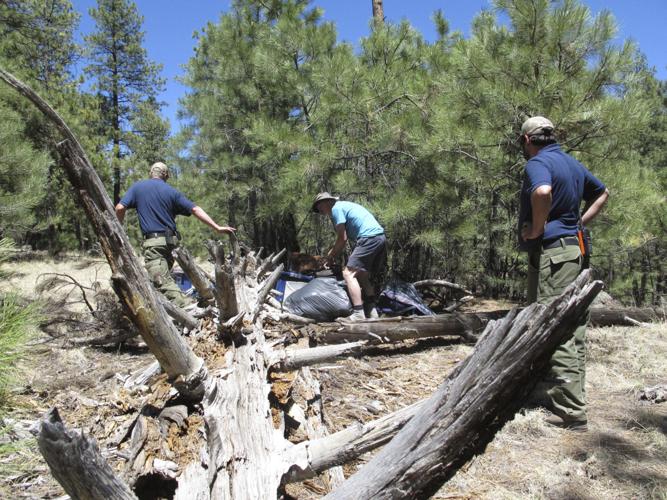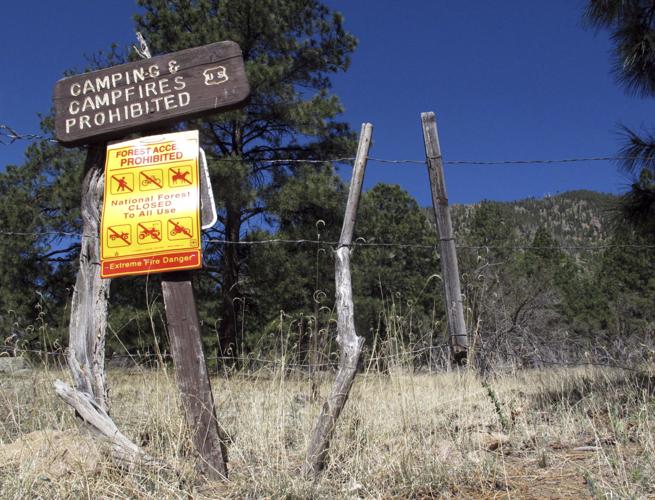FLAGSTAFF — Dry pine needles and dead wood snapped under fire prevention officer Matt Engbring’s boots as he hiked a half-mile into the woods in search of a makeshift campsite that had served as one man’s home until this week when the area was closed because of the escalating threat of massive wildfires.
Engbring walked past small ravines where wind quickly could carry embers and by the charred remains of a campfire, finally reaching the spot where John Dobson had been living among ponderosa pines in Arizona’s Coconino National Forest.
He spotted Dobson earlier as he was leaving the forest with his bicycle and issued a warning that he’ll likely repeat over the busy Memorial Day weekend as tourists flock to Arizona’s cooler mountainous areas to hike, bike, camp and fish.
“The area is closed now, and I can’t allow you to go back in,” he said.
Many parts of the West are dealing with drought, but nowhere has more state and federal land been closed to recreation than in Arizona, where conditions are ripe for large-scale wildfires. Portions of the Apache-Sitgreaves, Coconino, Kaibab and Tonto national forests are closed because the dry vegetation quickly can go up in flames, firefighters would have a hard time stopping it, and homes and water resources are at risk.
In neighboring New Mexico, fire restrictions are in place, but no forests have closed. Forest officials in the western part of that state have suspended woodcutting permits, including ceremonial wood gathering by Native American tribes. They’ve also warned the public to look out for hungry bears.
Forests in southern Colorado and southern Utah are open but officials are limiting campfires to developed areas.
“A lot of our rural, small communities depend on recreation and access to public land, so it’s on the table but really an option of last resort,” said Holly Krake, a spokeswoman for the U.S. Forest Service
Weather over the next six weeks is expected to be in line with the typical onset of fire season: increasingly hot, breezy and dry. Then the monsoon and its heavy rain should kick in.
“The bottom line is it’s going to get worse before it gets better,” said Rich Naden, fire weather meteorologist with the Southwest Coordination Center. “But this time of year is always like that. It’s almost like clockwork.”
Widespread forest closures in Arizona are rare. The 1.8 million-acre Coconino National Forest shut down completely because of fire danger in 2006 for nine days. A 2002 shutdown lasted nine weeks, encompassing the Memorial Day and July 4 holidays. Other national forests had closures in 2002 as well.
The current closures are affecting a small percentage of national forests in Arizona, and the general guidance for tourists is to check ahead of time to see what’s open and whether campfires are allowed.
Beyond inconveniencing campers and hikers, the drought’s effects and forest closures are being felt by ranchers who can’t graze cattle in the forest and researchers who can’t conduct studies. Forest thinning projects also are delayed.





